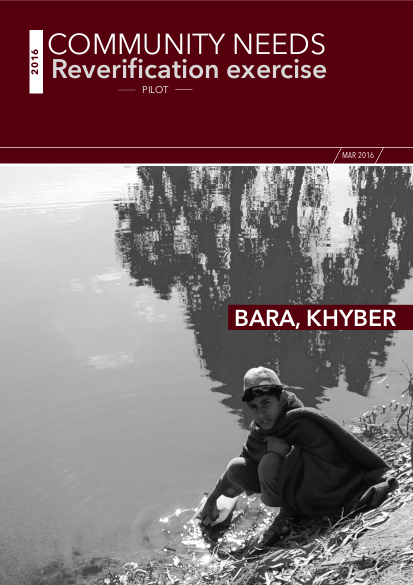
Between March 2015 and March 2016, some 450,000 internally displaced persons (IDPs) returned to Khyber Agency, FATA. As a result of the crisis, most of infrastructure has been severely damaged due to lack of maintenance. In many cases health, education and WASH facilities in return areas are either non-functional, or inadequately resourced. Meeting the immediate life-saving needs of IDPs when they return to FATA is one of the key strategic priorities of the humanitarian community in coordination with the Government of Pakistan. While several assessments provide in-depth information on the situation faced by returned IDPs, the methodologies followed does not enable easy comparison across areas and across time.
OCHA together with FDMA and the political administration conducted a pilot of the Community Needs Reverification Exercise (CNRE) in return areas of Bara, Khyber Agency in February 2016. This was based on key informant interviews and direct observation where possible. The primary objective of the exercise is to assess the availability of basic services for returned IDPs, to identify critical humanitarian needs across all return areas and to monitor these on a regular basis. The results of this pilot exercise will be used to review and potentially revise the CNRE methodology including a Cluster review of the indicators. It is intended that the CNRE will be conducted in all return areas of FATA on a regular basis.
The findings of the exercise showed that the livelihood, health and protection situation remained poor in nearly all return areas of Khyber Protection issues including a lack of psychosocial support were widespread. Access to doctors, especially female doctors, emergency health and maternity services remained a pressing issue in nearly all communities covered. It was also observed that education, shelter and WASH needs tended to be concentrated in specific communities, (especially in Kamar Khel, Malik Din Khel, Sepah and Shalobar for education and Bar Qambar Khel and Kamar Khel for WASH) making it easier to conduct community targetting for humanitarian activities. In terms of education, girls’ schools were less likely to be functional with significantly lower rates of enrolment than boys’ schools.